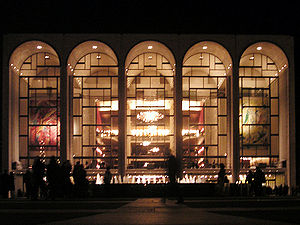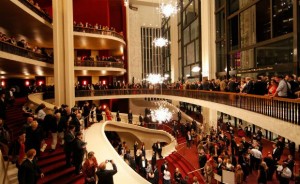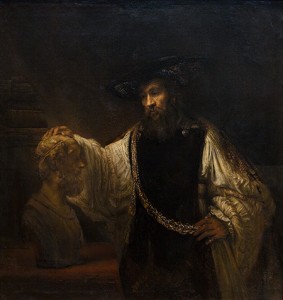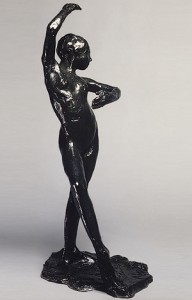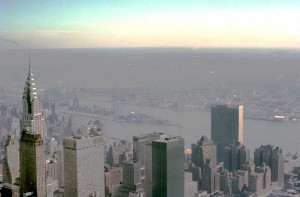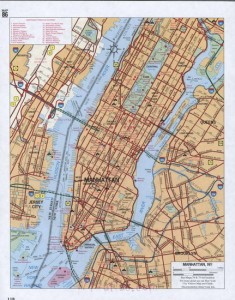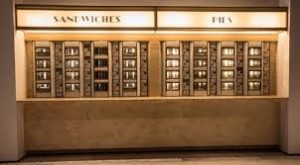Posts Tagged ‘New York’
Music of the Elysian Fields
Growing up in New Zealand, the Metropolitan Opera House in New York was the stuff of dreams: the tragic drama of the opera plots, the names of the great stars, the LP disks in my mother’s collection played over and over. To actually be there was an extraordinary sensation. “The whole place just breathes atmosphere,” I wrote to my parents, “the opulent decorations of a former era, and the shades of the singers who rose to fame on its stage – portraits of the greatest everywhere. “
Thursday, March 29, 1962 was our last night in New York before my husband Tony and I took ship for England to continue our youthful adventures. My sister Evelyn treated us to the opera tickets as a grand finale to our visit with her. The performance that evening was Gluck’s “Orfeo ed Euridice,” a very quiet, 18th century version of the story, with a happy ending. To quote from the Metropolitan Opera synopsis:
“Overcome with grief and remorse, the poet cries that life has no meaning for him without Euridice (“Che farò senza Euridice?”). Preparing to take his own life, he resolves to join his wife in death. Before he can do so Amor appears and announces that Orfeo has passed the tests of faith and constancy and restores Euridice to life. The happy couple returns to the upper world, where they are greeted by friends, who perform dances of celebration. Orfeo, Amor and Euridice praise the power of love.”
What stays in my memory is the dancing. As I wrote to my parents: “The ballets, particularly in the scene in the Elysian Fields, are really beautiful. I think it is the ballets that really make the opera – the terrific contrast between this scene and the previous one – the Furies at the entrance to Hades – all dressed in torn black tights, writhing and twisting, outlined against eerie red flames.”
Here is a YouTube recording of Gluck’s Elysian Fields ballet music.
If you’d like to learn more about the performers, here is a page from Opera News, March 10, 1962
I also found this March 1962 review by Irving Kolodin in the Saturday Review:
“On the whole, the visual aspects of this ‘Orfeo’ were more absorbing than the aural, for Harry Homer’s settings (of 1938) still provide an atmospheric frame for the action and Violette Verdy (a replacement for the absent Alicia Markova) is an excellent dancer, as is Arthur Mitchell, who shared the place of prominence with her. John Taras designed the choreography, which was theatrically justifying if somewhat showy, in its lifts and leaps, for the repose of the Elysian Fields.”
Maureen is exploring the contents of an old black filing cabinet in her attic, which contains 55 years of her writing notes
Art stuns like a hammer blow
With gold velvet drapery as backdrop, the newly acquired Rembrandt, “Aristotle Contemplating the Bust of Homer,” stood on an easel in the foyer of New York’s Metropolitan Museum of Art. Spotlights accentuated the golden glow of the painting’s surface. As I gazed, I felt a resonance with the feelings of the person depicted, my thoughts drawn into his as if into a dizzying vortex. I was astounded that brushstrokes and pigment could have such power to move me.
I had not seen great art before, except in books of reproductions. I had devoured the collection of large format books in my high school art room, and spent hours browsing the art section of secondhand book shops when I was in college. When we left New Zealand in 1962, Tony and I had as a priority to visit art museums and see the work of artists we admired. But nothing had prepared us for being in the presence of the real thing. Upstairs at the Metropolitan Museum of Art we found a whole room of Rembrandts. Dancing down a broad staircase, a whole series of bronze sculptures by Edgar Degas. We saw so many great works we discovered the phenomenon we named “mental indigestion” and wished we had more time in the city so that we could come back. We knew it would take weeks, months even, to absorb all this museum had to offer.
We visited other art museums during this stopover in New York on our way to England. Some we loved, some less so. In a letter to parents I wrote: “Sunday afternoon we went out to The Cloisters, which is right up at the northern tip of Manhattan. This is a religious museum. Parts of the remains of many old churches of Europe have been brought across and incorporated into the present structure, which keeps as closely as possible to the original styles. In a sense it is a success – some of the old fragments of stonework are very fine, and there are some very fine paintings, altar ornaments, and some magnificent tapestries – the highlight of the whole exhibition. But in spite of their attempts to reproduce chapels, all sense of reverence has been lost – the things are a curiousity for the locals to gawp at, and even sacrilegious.”
As I look back on these youthful letters and these memories, I see opinions about what matters to me already forming and clarifying. Many more experiences of the power of art would come in future years: sitting on a bench in a crowded London gallery, weeping over Georges Rouault’s “The Old King;” gazing in awe at the rose window in Chartres Cathedral; feeling the silence of the Blue Mosque in Istanbul. Always, enriching these experiences, the memory of that stunning awakening in New York.
Country bumpkins in New York
The friends we were traveling with chose the hotel, the cheapest they could find. It was on W. 46th Street, just off Times Square. Only one thin hand towel in the grungy bathroom. What to do? We called the desk. A maid appeared, to tell us the towels were not yet back from the laundry. In hindsight, a tip might have made towels magically appear. But we knew nothing about tipping; it wasn’t a part of the culture we knew.
Breaking our 1962 journey from New Zealand to England as young married couple off to see the world, Tony and I had disembarked in New York to visit my sister Evelyn, who was completing her doctorate at Syracuse University in upstate New York. From there the three of us traveled by Greyhound bus to Baltimore to spend a few days with her friends Brian and Jennifer Wybourne and visit Washington, DC.
Driving with the Wybournes back to New York, where we were to board another ship bound for England, we were wide-eyed at our first glimpse of the New Jersey turnpike. In a letter to parents I wrote: “…one of the most famous of the turnpikes – 150 miles of unhindered 6-lane highway. Then navigating the streets of the city – practically all are one-way, which makes it complicated, and you can imagine the traffic.”
The letter continues: “The next morning we went up to the top of the Empire State building – early, before the mist got up. The view from the top is terrific – you can see the whole extent of New York city – which is saying something.” I look back in memory and see the young woman I was, neck stiff from craning upward at rows of skyscrapers that made deep canyons of the streets, mind agog at the level of luxury displayed in store windows. I remember wandering through several of the huge department stores, feeling lost and out of place.
One day we walked to the tip of Manhattan and back, excited to see Wall St. and Greenwich Village, and to walk on Broadway. I wrote: “We were really footsore by the time we reached the hotel, but then we had the big experience of our trip – riding the New York subway during rush hour. That was some experience. We held each other tightly, and shoved with the rest. Sardines in a can had nothing on the train – but you had to make sure you weren’t pulled out with the rush at each station.” Evelyn, who was taking us out to the Bronx to dinner with the family she was staying with, wrote in her letter home: “I deliberately engineered it to be at Grand Central Station about 5 past 5 at night. It was quite an eye-opener for them…”
On each of the other nights we had the new experience of dining in a restaurant of a different nationality, all quite cheap by New York standards, and all in the same block as the hotel – Greek, Italian, Japanese, Chinese, as well as American – hamburgers and doughnuts.
For lunch Evelyn introduced us to automats. I commented: “We found foreign food much more interesting than American – they process it and vitaminise it, and goodness knows what – the result is rather tasteless.”
In future weeks I’ll talk about other aspect of our first visit to New York: the art, the music, the experience of visiting the heart of the United Nations secretariat.
And yes, a few more threadbare towels did eventually show up in our hotel room.
